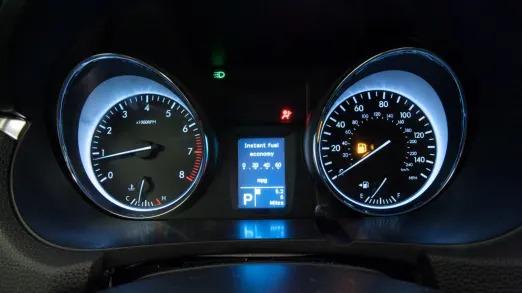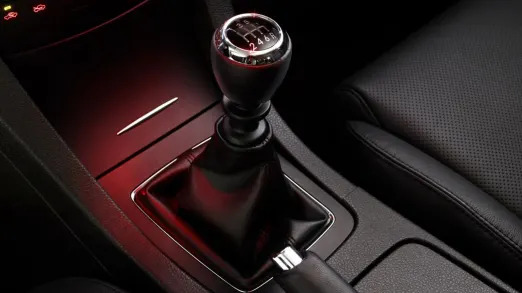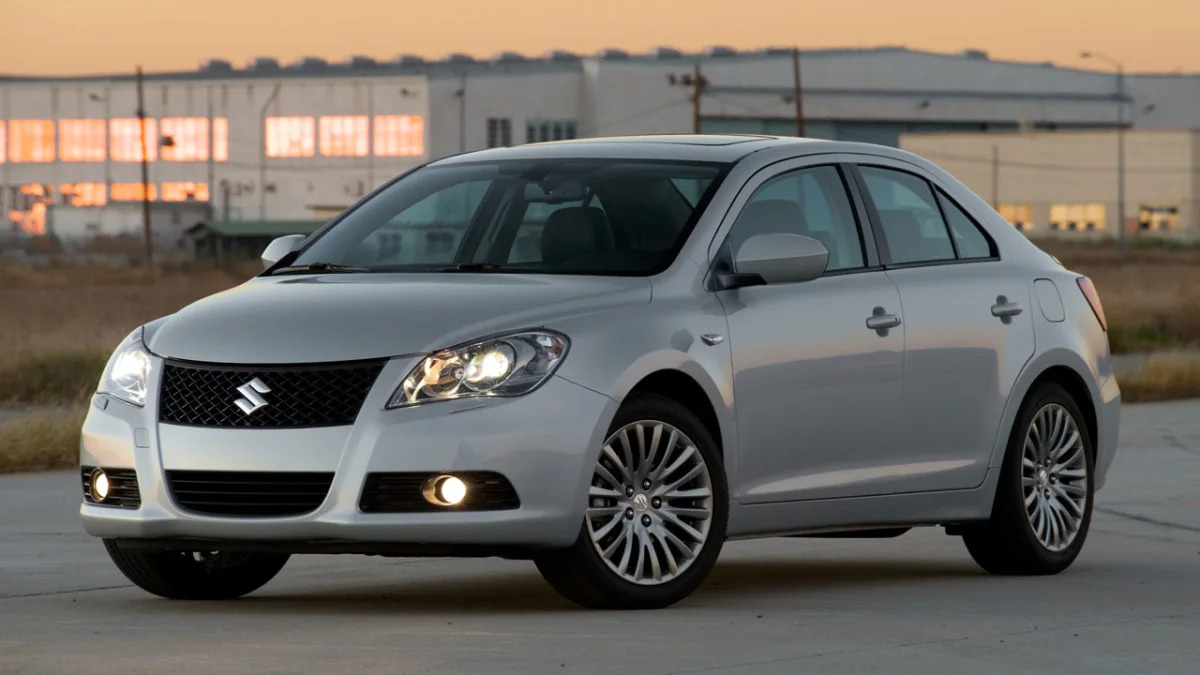Kizashi! It’s just fun to say. It means something along the lines of “Something great is coming,” an omen I remember fondly from 2009, when the 2010 Suzuki Kizashi midsize sedan was introduced to North America. When it did arrive, it impressed. It didn’t set the world on fire or anything, but it was an entertaining, well-executed sedan that didn’t look exactly like everything else on the road. It didn’t look weird, just neat.
It was only on the market for a few years before Suzuki, sadly, retreated from the U.S. market.
The powertrain was a humble thing. The only engine option was a naturally aspirated, 2.4-liter inline-four producing 185 horsepower and 170 pound-feet of torque. It came with front- or all-wheel drive, and either a continuously variable transmission or a six-speed manual transmission.
Why the Suzuki Kizashi?
There are three good reasons to buy a Kizashi. First, it is a solid all-around sedan. It was easy for the public to ignore — Suzuki didn’t have a huge presence in the U.S., and it was easily overshadowed by the likes of the Honda Accord, Mazda6 and Hyundai Sonata. That said, it could easily compete with those sedans on equal footing in terms of quality and content.
Second, it’s fun to drive. It’s not particularly fast, with 0-60 coming in a reasonable 7.5 seconds or so, but boy can this thing handle. A stiff body, sporty suspension and accurate, responsive steering make it a blast to pilot when the road starts to get bendy.
Third, it’s unique. It was only sold here for a few years, and it has since been orphaned here in the U.S. There’s a certain charm to driving a good, affordable car that most of the rest of the car buying world slept on util it was too late.
Which Suzuki Kizashi to choose?
Whether you get front-wheel drive or all-wheel drive is normally a personal decision, based a lot upon where you live. Fuel economy differences across the Kizashi drivetrains is negligible, with combined fuel economy ranging from 24 to 26 miles per gallon. That said, you probably want to get the six-speed manual transmission, which was only offered with front-wheel drive. If you want AWD, you’re stuck with the continuously variable transmission. The manual Kizashi is also lighter, and nets you the entire 185 horsepower. The CVT-equipped Kizashi is only 180.
The manual Kizashi’s clutch is light and easy to modulate, and the shifter feels a touch on the vague and loose side. Still, it’s plenty of fun, and way better than using paddles to row your way through fake gears with a CVT.


Also, we like the sporty GTS or well-equipped SLS trims. That said, there aren’t a lot of Kizashis available on the market, so finding something within your budget that’s available near you might weigh more heavily than anything else in which Kizashi you pick. Browsing our listings, we see prices starting around $5,000-$8,000 for vehicles with 100,000 miles and up, but there are low-mileage examples available starting at about $8,000.
What else to consider?
The obvious contenders are the Honda Accord, Hyundai Sonata and Mazda6 — all entertaining, mainstream sedans, and all solid choices on their own. The big difference with those is that most of those offered a V6 in addition to the four-cylinder. That’s a crowded segment, and there are a ton of options other options available, too. If you’re reading this, though, you’re probably interested in something funky. Thankfully, the Kizashi lived up to its name — something good indeed came … and went.











Sign in to post
Please sign in to leave a comment.
Continue